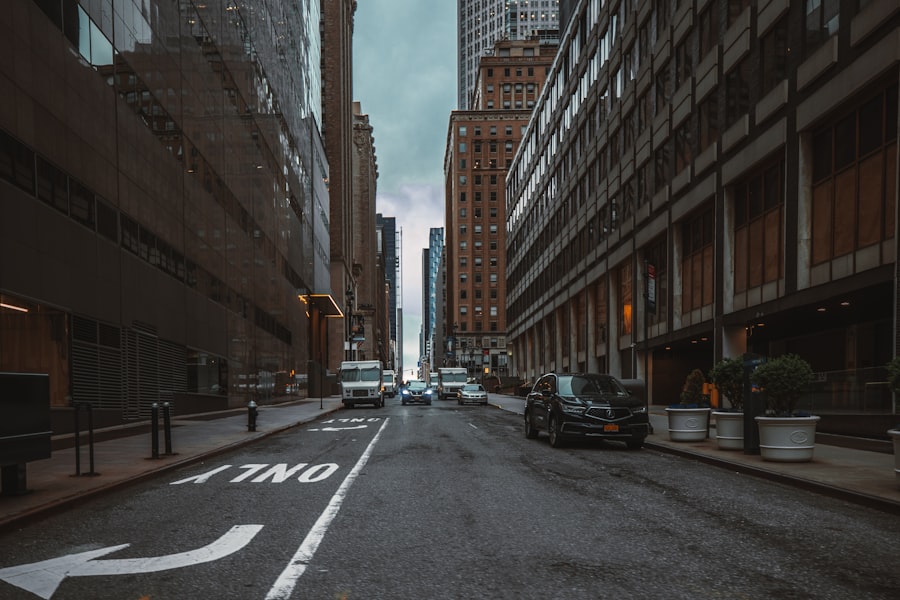Download links
How to install Mastering the Art of Parkour: The Ultimate Guide APK?
1. Tap the downloaded Mastering the Art of Parkour: The Ultimate Guide APK file.
2. Touch install.
3. Follow the steps on the screen.
Description
Parkour, often described as the art of movement, is a discipline that emphasizes fluidity, efficiency, and creativity in navigating obstacles. Originating in France in the late 20th century, parkour has evolved from a training method for military personnel into a global phenomenon embraced by individuals of all ages and backgrounds. At its core, parkour involves running, jumping, climbing, and vaulting over various structures, whether they be urban landscapes or natural environments.
The essence of parkour lies in its philosophy: to move through one’s environment with grace and purpose, transforming everyday spaces into playgrounds for physical expression. The foundational principles of parkour include efficiency, adaptability, and self-improvement. Practitioners, known as traceurs (male) or traceuses (female), strive to overcome obstacles in the most efficient manner possible, often employing techniques that minimize energy expenditure while maximizing speed and fluidity.
This requires not only physical prowess but also a deep understanding of one’s body and its capabilities. As individuals engage with their surroundings, they learn to adapt their movements to different contexts, whether it’s scaling a wall, leaping across rooftops, or navigating through crowded urban areas. The journey of mastering parkour is as much about personal growth and self-discovery as it is about physical skill.
Key Takeaways
- Parkour is a physical discipline that involves moving through urban environments using only the human body and the surroundings to propel oneself.
- Developing strength and agility through regular training and conditioning exercises is essential for mastering parkour movements.
- Mastering parkour techniques such as precision jumps, wall runs, and vaults requires practice, patience, and dedication.
- Overcoming fear and mental barriers is a crucial aspect of parkour, as it involves taking calculated risks and pushing personal limits.
- Safety tips and injury prevention in parkour include proper warm-up, using appropriate gear, and knowing one’s limits to avoid accidents.
Developing Strength and Agility for Parkour
To excel in parkour, developing a solid foundation of strength and agility is paramount. Strength training should focus on functional movements that mimic the actions performed during parkour. Exercises such as squats, lunges, and push-ups are essential for building the core and lower body strength necessary for jumping and landing safely.
Additionally, incorporating plyometric exercises like box jumps and burpees can enhance explosive power, which is crucial for vaulting over obstacles or performing dynamic movements. Agility is equally important in parkour, as it allows practitioners to change direction quickly and efficiently. Agility drills can include ladder drills, cone sprints, and shuttle runs that improve foot speed and coordination.
These exercises not only enhance physical capabilities but also help develop spatial awareness—an essential skill for navigating complex environments. Furthermore, incorporating balance training through activities like slacklining or balance beam exercises can significantly improve stability during jumps and landings, reducing the risk of injury.
Mastering Parkour Techniques and Movements

Once a solid base of strength and agility has been established, aspiring traceurs can begin to master specific parkour techniques and movements. Fundamental skills include the roll, precision jump, vaults, and wall runs. The roll is a critical technique for safely dissipating the impact of a fall or jump; it involves tucking the body and rolling diagonally across the back to distribute force evenly.
Practicing this movement on soft surfaces can help build confidence before attempting it from greater heights. Precision jumps require a combination of focus and control, as they involve leaping from one point to another with accuracy. This skill is often practiced by jumping between two parallel lines or markers placed at varying distances apart.
Vaults, such as the Kong vault or the speed vault, are essential for overcoming obstacles like railings or walls. Each vault has its own technique and requires practice to execute smoothly. Wall runs are another vital movement that allows traceurs to ascend vertical surfaces; mastering this technique involves building leg strength and learning to use momentum effectively.
Overcoming Fear and Mental Barriers in Parkour
| Technique | Success Rate | Difficulty Level |
|---|---|---|
| Precision Jump | 80% | Intermediate |
| Wall Run | 70% | Advanced |
| Gap Jump | 60% | Intermediate |
| Underbar | 75% | Intermediate |
Fear is an inherent part of learning any new physical discipline, and parkour is no exception. Many practitioners face mental barriers that can hinder their progress. Overcoming these fears often requires a combination of gradual exposure and mental conditioning.
One effective approach is to break down movements into smaller components, allowing individuals to build confidence step by step. For instance, if someone is apprehensive about performing a high jump, they might start by practicing lower jumps before gradually increasing the height. Visualization techniques can also play a significant role in overcoming fear.
By mentally rehearsing movements before attempting them physically, practitioners can create a sense of familiarity that reduces anxiety.
Sharing experiences with fellow traceurs can foster a sense of camaraderie that helps individuals confront their fears together.
Ultimately, embracing the challenge of overcoming mental barriers is an integral part of the parkour journey.
Safety Tips and Injury Prevention in Parkour
Safety should always be a top priority for anyone practicing parkour. While the discipline encourages pushing physical limits, it is essential to do so responsibly to minimize the risk of injury. One fundamental safety tip is to always assess the environment before attempting any movement.
This includes checking for potential hazards such as uneven surfaces, sharp edges, or unstable structures. Practicing in safe locations with soft landing areas—like grass or padded surfaces—can significantly reduce the risk of injury during training sessions. In addition to environmental awareness, proper warm-up routines are crucial for preparing the body for physical activity.
Dynamic stretching and mobility exercises can help increase blood flow to muscles and improve flexibility, reducing the likelihood of strains or sprains. It’s also important to listen to one’s body; if fatigue sets in or pain is experienced during training, taking a break or modifying movements is essential to prevent overuse injuries. Wearing appropriate footwear that provides adequate grip and support can further enhance safety during practice.
Taking Parkour to the Next Level: Advanced Tips and Tricks

Taking Your Parkour Skills to the Next Level
For those who have mastered the basics of parkour and are looking to elevate their skills further, there are numerous advanced techniques and tricks to explore.
Mastering Aerial Maneuvers>
One such area is the incorporation of flips and aerial maneuvers into routines. Techniques like the backflip or front flip require not only strength but also precise timing and spatial awareness. Practicing these movements on trampolines or into foam pits can provide a safe environment for learning before attempting them on solid ground.
Developing Creative Flow>
Another advanced aspect of parkour involves creative flow—linking multiple movements together seamlessly to create a fluid sequence. This requires not only technical proficiency but also an understanding of rhythm and timing. Practitioners can experiment with different combinations of jumps, rolls, and vaults to develop their unique style. Filming training sessions can also be beneficial; reviewing footage allows individuals to analyze their movements critically and identify areas for improvement.
Exploring New Environments and Opportunities>
Moreover, exploring different environments can inspire creativity in movement. Practicing in diverse settings—such as forests, urban landscapes, or indoor parks—can challenge traceurs to adapt their skills to new obstacles and surfaces. Engaging with the broader parkour community through workshops or competitions can also provide fresh perspectives and techniques that enhance one’s practice.
FAQs
What is parkour?
Parkour is a physical discipline that involves moving through an environment in a creative and efficient way, using only the human body and the surroundings to propel oneself.
Where did parkour originate?
Parkour originated in France, developed by David Belle and his group of friends in the late 1980s. It was inspired by Belle’s father, a former military firefighter, and his training methods.
What are the basic movements of parkour?
The basic movements of parkour include running, jumping, climbing, vaulting, and balancing. These movements are used to navigate obstacles and terrain in an urban or natural environment.
Is parkour dangerous?
Parkour can be dangerous if not practiced with proper training and safety precautions. It involves high-risk movements and requires a high level of physical and mental discipline.
Is parkour a competitive sport?
While parkour is not traditionally a competitive sport, there are organized events and competitions, such as parkour races and freerunning competitions, where practitioners can showcase their skills and abilities.
What are the benefits of practicing parkour?
Practicing parkour can improve strength, agility, coordination, and mental focus. It also promotes creativity, problem-solving, and adaptability in navigating different environments.





